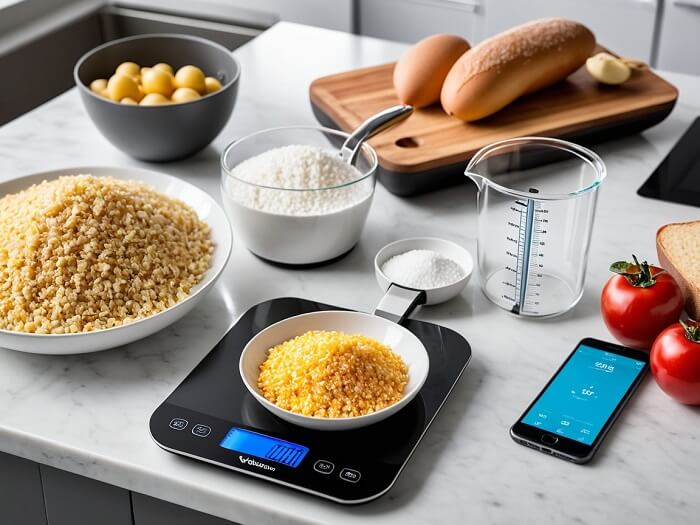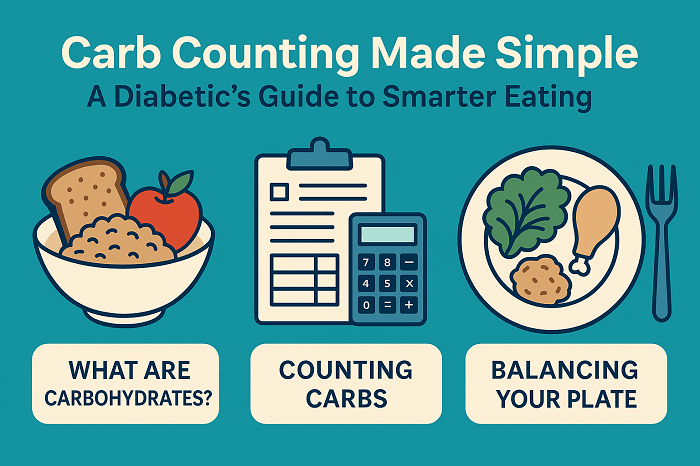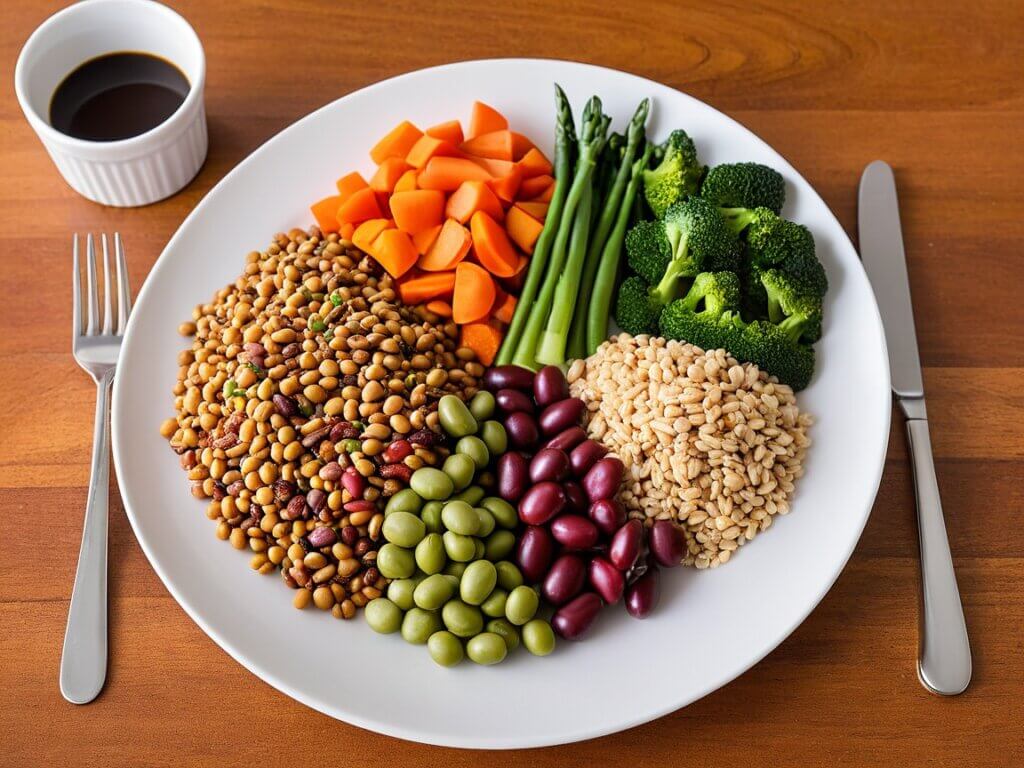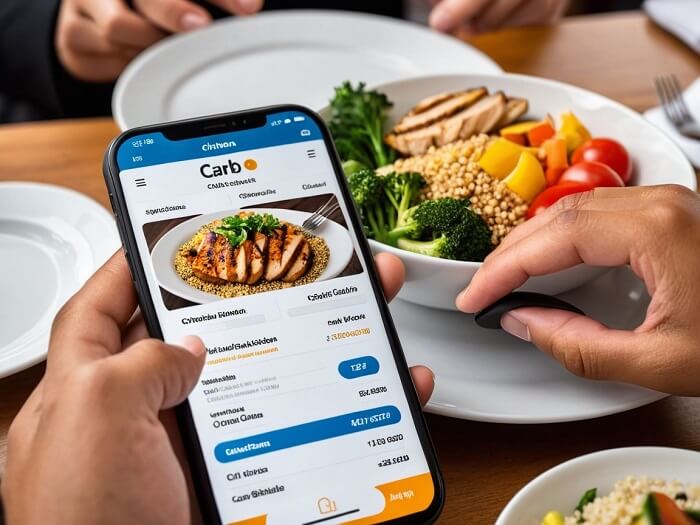🔒 Disclaimer
This article is for informational purposes only and does not constitute medical advice. Always consult with your healthcare provider, registered dietitian, or certified diabetes educator before making any changes to your diet, medication, or lifestyle.
✅ Introduction: Why Carb Counting Matters for People with Diabetes
Managing diabetes is not just about avoiding sugar—it’s about understanding how different types of food affect your blood glucose levels, especially carbohydrates. Whether you’re newly diagnosed or looking to fine-tune your nutrition, carbohydrate counting (or carb counting) is a proven strategy to help manage blood sugar levels more effectively.
Carbohydrates are the main nutrient that affects blood glucose. Every time you eat a carb-rich food, your body breaks it down into glucose, which enters your bloodstream and raises your blood sugar. While you don’t need to eliminate carbs completely, learning how to count them can empower you to eat with greater confidence and control. how carbohydrates affect blood sugar
In this guide, we’ll break down carb counting in simple terms—no confusing math, no unrealistic restrictions. You’ll discover:
-
What carbohydrates are and how they impact blood sugar
-
How to identify and measure carbs in everyday foods
-
Tips for portion control, label reading, and planning balanced meals
-
Practical advice for managing carbs at home, on the go, and during special events
By the end, you’ll feel more in control of your plate—and your health. With this guide to Carb Counting Made Simple, you’ll learn how to make food choices that support better glucose management.

What Are Carbohydrates?
Carbohydrates are one of the three main macronutrients—alongside protein and fat—that your body uses for energy. Carbs are found in a wide range of foods, including:
-
Starches: bread, rice, pasta, corn, potatoes
-
Sugars: fruit, honey, table sugar, desserts
-
Fiber: vegetables, whole grains, legumes (although fiber isn’t fully digested and affects blood sugar differently)
When you consume carbs, your digestive system breaks them down into glucose. This glucose is either used immediately for energy or stored for later use. CDC guide to diabetes and healthy eating
For people with diabetes, the problem lies in how the body processes glucose, either due to lack of insulin or insulin resistance. This is where carb counting becomes crucial.

How Does Carb Counting Help with Diabetes?
Carb counting helps you:
-
Maintain stable blood glucose levels
-
Adjust insulin doses accurately (for insulin-dependent diabetics)
-
Avoid post-meal spikes and crashes
-
Enjoy a wider variety of foods while staying in control
Rather than guessing or eliminating carbs altogether, counting carbs enables you to make informed decisions about what, how much, and when to eat.
For example, if your doctor advises a meal plan with 45–60 grams of carbs per meal, you’ll need to estimate how many grams are in each food item to stay within that target range.
Understanding the Types of Carbs (And Which Ones to Choose)
All carbs are not created equal. It’s important to know the difference between simple and complex carbohydrates, as well as good carbs vs. bad carbs.
1. Simple Carbohydrates (Quickly absorbed, raise blood sugar fast)
Found in:
-
Candy, soda, white bread, pastries, table sugar
-
Some fruits (like watermelon or pineapple, in moderation)
Pro Tip: These can cause sharp spikes in blood glucose and should be limited.
2. Complex Carbohydrates (Slower digestion, steadier blood sugar)
Found in:
-
Whole grains (quinoa, brown rice, oats)
-
Legumes (beans, lentils)
-
Vegetables and fruits with skin
-
High-fiber foods
Pro Tip: Focus on fiber-rich, minimally processed carbs. They digest slowly and reduce glucose spikes.
How to Count Carbs Accurately: Step-by-Step
Carb counting may seem overwhelming at first, but with a few basic tools and habits, it becomes second nature. Here’s how to get started:
🔹 Step 1: Learn to Read Nutrition Labels
Most packaged foods include a nutrition label with carbohydrate information.
FDA’s official guide to reading nutrition label
What to Look For:
-
Total Carbohydrates (per serving): This includes starches, sugars, and fiber.
-
Dietary Fiber: Subtract this from the total carbs if the fiber is 5g or more (for net carb estimation).
-
Added Sugars: Watch for these, as they can cause blood sugar spikes.
Example:
If a product has 20g total carbs, 5g fiber, and 0g added sugar:
-
Net carbs = 20g – 5g = 15g
This is the amount likely to impact blood sugar.
✅ Tip: Always check the serving size. If you eat double the serving, you double the carbs.
🔹 Step 2: Use Carb Counting Tools
You don’t have to do it alone. These tools make carb counting easier:
-
Carb counting apps like MyFitnessPal, Carb Manager, or MySugr
-
Food scales to weigh portions for accuracy
-
Measuring cups and spoons for home-cooked meals
-
Carbohydrate reference books or charts (many available online and as PDFs)
✅ Pro Tip: Start with common foods you eat daily. Memorizing their carb content builds long-term confidence.
🔹 Step 3: Learn Common Carb Values (Everyday Foods)
Memorizing the carb content of common foods helps you estimate without always checking a label.
Here are a few examples (approximate values per serving):
| Food Item | Portion Size | Carbs (grams) |
|---|---|---|
| 1 slice whole wheat bread | 1 slice (30g) | 12–15g |
| Cooked brown rice | ½ cup | 22g |
| Medium apple | 1 medium | 25g |
| Cooked oatmeal | ½ cup | 15–20g |
| Cooked pasta (whole wheat) | ½ cup | 20g |
| Skim milk | 1 cup | 12g |
| Baby carrots | 10 small | 8g |

Planning a Balanced Plate with Carbs in Mind
Carb counting doesn’t mean eating only numbers—it’s about building nutrient-rich, satisfying meals.
Use the “Diabetes Plate Method”:
This simple visual guide helps control carbs and balance nutrients:
-
½ plate non-starchy vegetables (spinach, peppers, broccoli)
-
¼ plate lean protein (chicken, fish, tofu)
-
¼ plate healthy carbohydrates (brown rice, beans, sweet potato)
-
Add: A small serving of fruit or low-fat dairy if needed
✅ Tip: This method naturally limits high-carb intake and boosts fiber and protein—both helpful for glucose control. MyPlate nutrition recommendations from USDA
🕒 Carb Timing: Why When You Eat Matters
Spacing your carbs evenly throughout the day prevents blood sugar spikes and crashes. Here’s how to time your carb intake smartly:
-
Eat 3 main meals with consistent carb portions
-
Add healthy snacks if meals are over 4–5 hours apart
-
Don’t skip meals—doing so can lead to low blood sugar or overeating later
Eating Out and On-the-Go: Smart Carb Choices for Real Life
Managing carbs doesn’t stop when you leave home. Whether you’re at a restaurant, traveling, or grabbing a quick bite, you can stay on track with these strategies:
✅ 1. Study the Menu in Advance
Many restaurants post nutritional info online. Look for:
-
Carb content (especially in side dishes and sauces)
-
Low-carb or diabetic-friendly options (grilled, baked, steamed)
-
Opportunities to customize (swap fries for salad, ask for dressing on the side)
💡 Tip: Use apps like MyFitnessPal or CalorieKing to estimate carbs for popular meals.
✅ 2. Master the Art of Substitution
When eating out, ask for simple swaps:
-
Replace white rice with steamed veggies or quinoa
-
Skip the breadbasket or request whole grain options
-
Choose vinaigrette over creamy dressings
-
Say “no thanks” to sugary drinks—opt for water, unsweetened iced tea, or club soda
✅ 3. Watch for Hidden Carbs
Restaurant meals often contain more carbs than expected—especially in:
-
Sauces, glazes, and gravies
-
Deep-fried foods (often breaded or coated)
-
Sweetened beverages (smoothies, cocktails, specialty coffees)
Always ask: “Can I get this grilled or baked?”
How Exercise Affects Carb Needs
Physical activity has a major impact on how your body uses glucose. Depending on the type and duration of exercise, you may need to adjust your carb intake.
Light Exercise (e.g., walking)
-
Usually doesn’t require carb adjustment unless done for long periods
-
A small snack may help prevent hypoglycemia (low blood sugar)
Moderate to Intense Exercise (e.g., gym workouts, jogging)
-
You may need to eat extra carbs before, during, or after activity
-
Monitor your blood sugar levels before and after exercise
⚠️ If you’re on insulin or glucose-lowering medications, talk to your doctor about how to safely adjust doses based on activity levels.
Sample Daily Meal Plans by Carb Level
Your doctor or dietitian may recommend a daily carb intake based on your health, weight, and activity level. Below are examples of daily meal plans for 45g, 60g, and 75g of carbs per meal.
45g Carb/Meal Plan (135g/day)
Breakfast:
-
1 slice whole grain toast (15g)
-
1 boiled egg (0g)
-
½ cup blueberries (10g)
-
½ cup oatmeal (15g)
-
Black coffee (0g)
Breakfast options for diabetics
Lunch:
-
Grilled chicken salad (5g from vegetables)
-
½ cup quinoa (20g)
-
Apple slices (15g)
-
Water or unsweetened tea
Diabetic-friendly lunch recipes
Dinner:
-
Steamed fish with lemon
-
½ cup brown rice (22g)
-
Roasted Brussels sprouts (8g)
-
Greek yogurt (unsweetened, 10g)
60g Carb/Meal Plan (180g/day)
Breakfast:
-
2 scrambled eggs
-
1 slice whole grain toast (15g)
-
½ banana (13g)
-
1 cup oatmeal (30g)
-
Cinnamon + almond milk
Lunch:
-
Turkey sandwich on whole wheat bread (30g)
-
Carrot sticks (6g)
-
1 medium orange (15g)
-
Sparkling water
Dinner:
-
Grilled chicken breast
-
1 cup sweet potato (30g)
-
Steamed broccoli (6g)
-
Side salad with oil & vinegar
75g Carb/Meal Plan (225g/day)
Breakfast:
-
Smoothie with banana, berries, oats, almond milk (45g)
-
Hard-boiled egg
-
1 slice toast with peanut butter (30g)
Lunch:
-
Whole wheat pita wrap with grilled veggies & hummus (40g)
-
Side of lentil soup (30g)
-
Apple slices (15g)
Dinner:
-
Grilled salmon
-
1 cup brown rice (45g)
-
Steamed asparagus (5g)
-
Baked pear with cinnamon (25g)
⚠️ Always tailor your carb intake with guidance from your healthcare team.
Common Mistakes in Carb Counting (And How to Avoid Them)
Even with the best intentions, it’s easy to make errors when counting carbs. Here are the most frequent pitfalls and how to stay on track:
❌ 1. Guessing Portion Sizes
Most people underestimate how much they’re eating, especially with rice, pasta, or cereal.
✅ Fix it: Use measuring cups, a food scale, or visual guides like “the fist method” (one fist ≈ 1 cup).
❌ 2. Forgetting Hidden Carbs
Carbs sneak into sauces, dressings, and processed foods. A tablespoon of ketchup, for example, contains ~5g carbs.
✅ Fix it: Always read nutrition labels and track even small condiments or snacks.
❌ 3. Ignoring Beverages
Juices, sodas, fancy coffees, and energy drinks are loaded with sugar. Even smoothies labeled “healthy” can spike blood sugar.
✅ Fix it: Stick with water, black coffee, or unsweetened alternatives. Count carbs in anything you drink.
❌ 4. Skipping Fiber Calculations
Fiber slows glucose absorption, so not subtracting fiber from total carbs can overestimate net carbs.
✅ Fix it: Subtract dietary fiber (especially if 5g or more) from total carbs for a more accurate impact estimate.
Tools & Resources to Make Carb Counting Easier
The good news? You don’t need to do this all in your head. Technology and guides can make carb counting nearly automatic.
📱 Recommended Apps
-
MyFitnessPal – Tracks food, macros, and exercise
-
Carb Manager – Designed specifically for carb tracking
-
Glucose Buddy – Combines glucose tracking and carb data
-
MySugr – Popular with Type 1 and Type 2 diabetics
These tools support the principles of Carb Counting Made Simple, helping you track and plan with ease.
📚 Books & Printables
-
“The CalorieKing Calorie, Fat & Carbohydrate Counter”
-
Printable carb count charts for diabetics (available from the ADA and CDC websites)
Meal Planning Help
-
Talk to a registered dietitian or diabetes educator for a customized meal plan
-
Many hospitals and diabetes centers offer group classes or one-on-one training
Long-Term Success: Making Carb Counting a Habit
Mastering carb counting isn’t about perfection—it’s about consistency and awareness. Here are a few tips to help you maintain success:
-
Track daily until you build confidence
-
Be patient—this is a skill that improves over time
-
Review regularly with a healthcare provider to adjust goals
-
Celebrate small wins: better energy, fewer blood sugar spikes, better A1C levels
💬 “What gets measured, gets managed.” – This saying applies perfectly to carb counting.
Final Thoughts: You’re in Control
Carb counting is one of the most effective tools for managing diabetes. It helps you understand your body’s response to food, make empowered decisions, and enjoy your meals without fear.
You don’t have to give up carbs—you just have to learn how to balance, measure, and plan them in a way that works for your body. With the tips and tools in this guide, you’re already on the right path.
By applying the principles of Carb Counting Made Simple, you’re already taking one of the most important steps in managing your diabetes.
🙏 Disclaimer Reminder
This article is for general educational purposes only and is not a substitute for professional medical advice. Always consult your doctor, registered dietitian, or diabetes educator before making changes to your diet or treatment plan.
